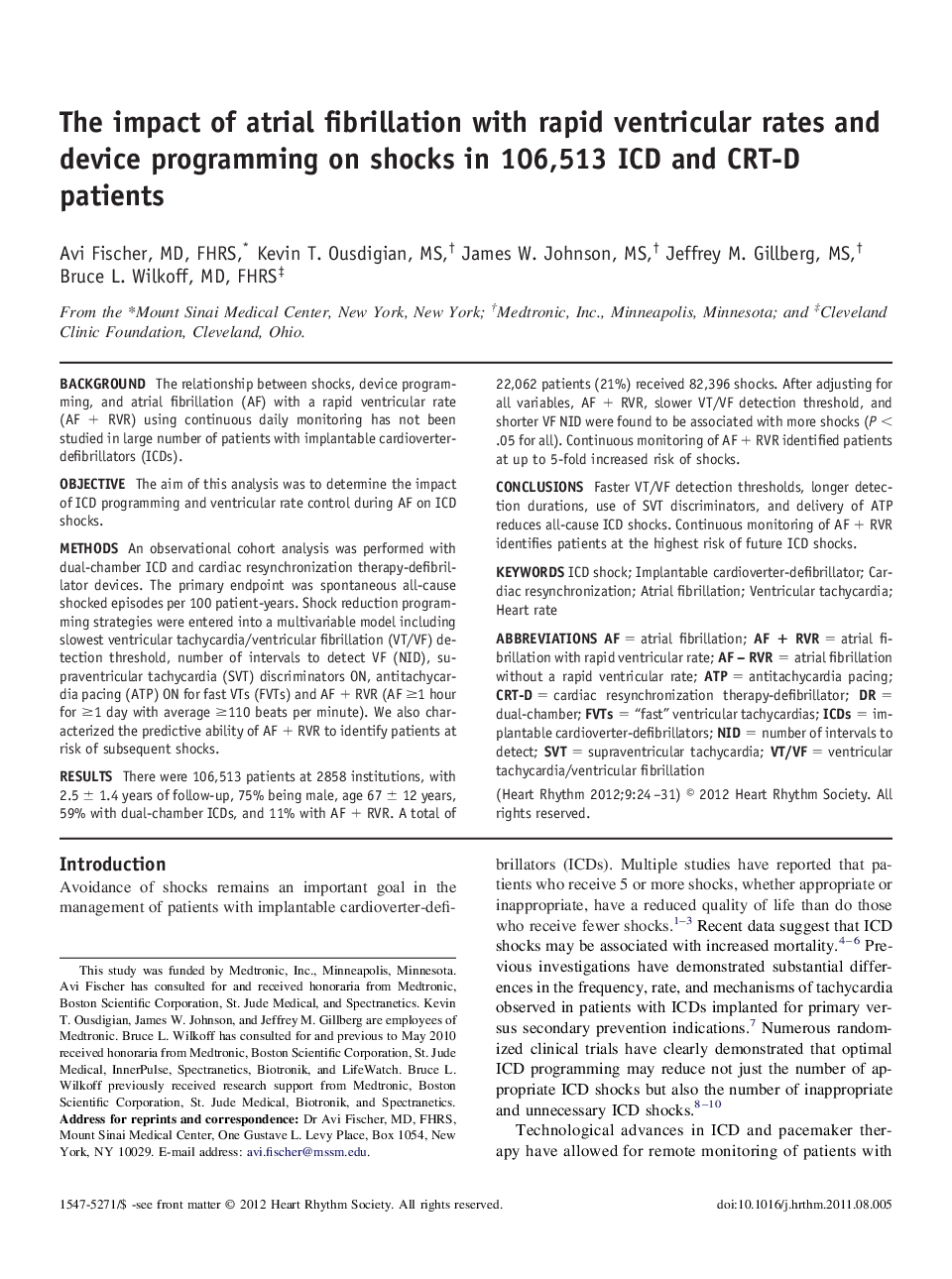| کد مقاله | کد نشریه | سال انتشار | مقاله انگلیسی | نسخه تمام متن |
|---|---|---|---|---|
| 2922848 | 1175857 | 2012 | 8 صفحه PDF | دانلود رایگان |

BackgroundThe relationship between shocks, device programming, and atrial fibrillation (AF) with a rapid ventricular rate (AF + RVR) using continuous daily monitoring has not been studied in large number of patients with implantable cardioverter-defibrillators (ICDs).ObjectiveThe aim of this analysis was to determine the impact of ICD programming and ventricular rate control during AF on ICD shocks.MethodsAn observational cohort analysis was performed with dual-chamber ICD and cardiac resynchronization therapy-defibrillator devices. The primary endpoint was spontaneous all-cause shocked episodes per 100 patient-years. Shock reduction programming strategies were entered into a multivariable model including slowest ventricular tachycardia/ventricular fibrillation (VT/VF) detection threshold, number of intervals to detect VF (NID), supraventricular tachycardia (SVT) discriminators ON, antitachycardia pacing (ATP) ON for fast VTs (FVTs) and AF + RVR (AF ≥1 hour for ≥1 day with average ≥110 beats per minute). We also characterized the predictive ability of AF + RVR to identify patients at risk of subsequent shocks.ResultsThere were 106,513 patients at 2858 institutions, with 2.5 ± 1.4 years of follow-up, 75% being male, age 67 ± 12 years, 59% with dual-chamber ICDs, and 11% with AF + RVR. A total of 22,062 patients (21%) received 82,396 shocks. After adjusting for all variables, AF + RVR, slower VT/VF detection threshold, and shorter VF NID were found to be associated with more shocks (P < .05 for all). Continuous monitoring of AF + RVR identified patients at up to 5-fold increased risk of shocks.ConclusionsFaster VT/VF detection thresholds, longer detection durations, use of SVT discriminators, and delivery of ATP reduces all-cause ICD shocks. Continuous monitoring of AF + RVR identifies patients at the highest risk of future ICD shocks.
Journal: Heart Rhythm - Volume 9, Issue 1, January 2012, Pages 24–31